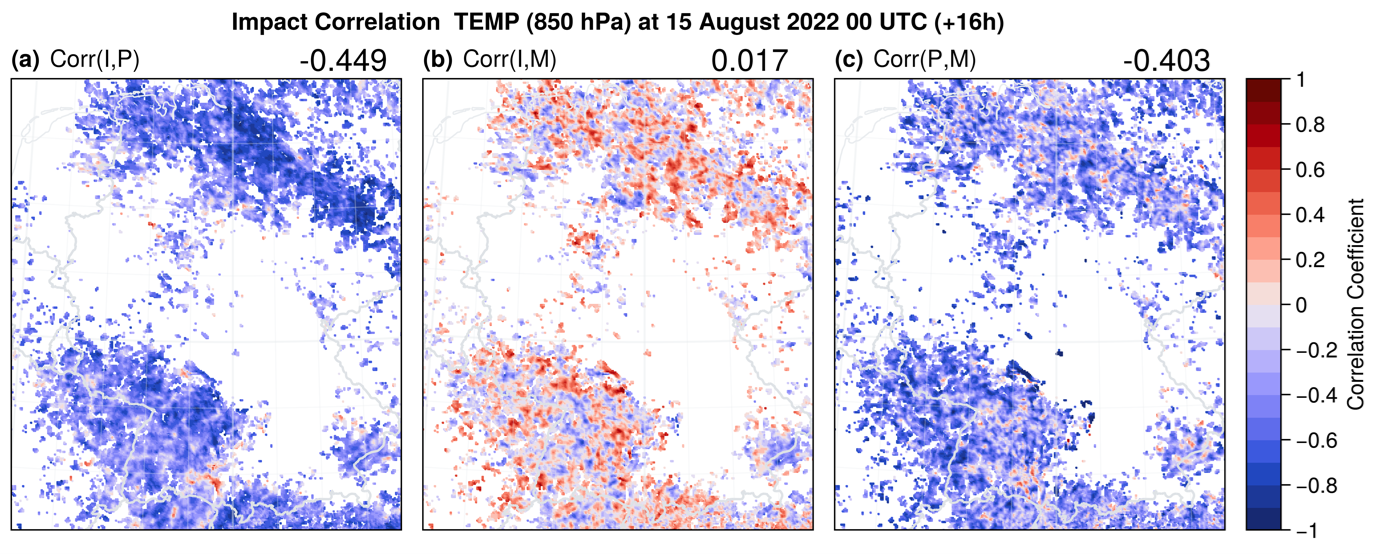How can we achieve more reliable ensemble forecasts? The variance budget helps … to estimate the efficiency of various perturbations.
30.07.2025

Predicting convective summer weather conditions – such as those in recent weeks – is extremely difficult because the events are so small-scale. In the best case scenario, it is possible to estimate the total amount of rainfall and a risk of precipitation for some area around a point. Ensemble forecasts are used for this purpose – through many forecast runs try to provide a measure of the certainty of a forecast. If they agree, the forecast is reliable; if they do not, it is unreliable.
Ensemble forecasts of summer convection over central Europe are frequently overconfident, that is the ensemble spread is too small to capture the observed weather. Various model representations of missing uncertainty, which is due to limitations of the atmospheric model, can reduce this overconfidence by introducing more variability into the forecasts. However, an accurate evaluation of such model uncertainty representations is often not straightforward due to complex interactions. To identify when and where these representations are beneficial, we developed the variance budget framework that can track the evolution of the effects and their interactions.
Depending on the prevailing weather situation model uncertainty representations (e.g. tiny perturbations in the turbulence scheme or the microphysics) may considerably increase the variability at a grid point. However, application of the budget analysis shows that the interactions between different impacts and between scales mask this effect. This finding suggests that incorporating various uncertainty representations that act on different scales is necessary to improve ensemble forecasts, which can be inspected using the variance budget.
The figure displays maps of correlation coefficients between different model uncertainties (I for initial condition uncertainty, P for perturbations of turbulence, and M for microphysical perturbations) using an ICON-D2-Ensemble over Germany. Systematic negative correlations (in blue) mean, for instance, that the total variance is smaller than the sum of individual variances of two uncertainties because interactions between them cancel out their impact. The calculation of the total variance using these correlations informs about the importance of individual uncertainty representations and facilitates the design of future ensemble forecasting systems.
Literatur: Matsunobu et al, 2025: A Variance Budget to estimate the Growth and Interaction of Uncertainties
in Convective-scale Forecasts. Under review at Mon. Wea. Rev.

